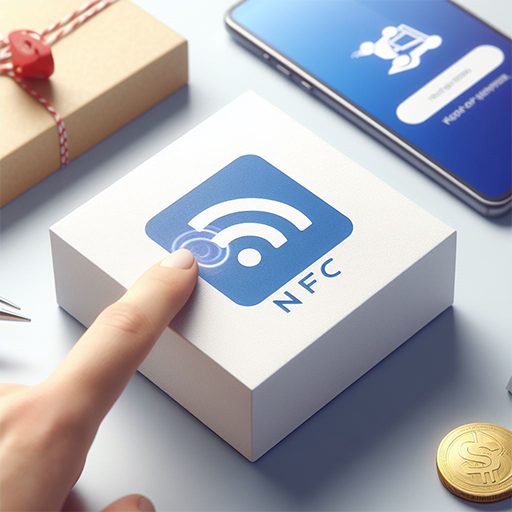Connected Packaging & The Future Of Print

Posted on 2023-05-26
Tags: #DigitalTransformation #ConnectedPackaging #InteractivePrint #SmartPackagingTech #DigitalIntegration #EnhancedBrandExperience #QRCodeEngagement #NFCInnovation #RFIDTechnology #ImageRecognitionInPrint #TechDrivenPackaging #CustomerInteraction #DigitalContentAccess #InnovativePackaging #PackagingTechnology #ConsumerEngagement #TechTrendsInPrint #SmartLabeling #DigitalLink #PackagingEvolution #Augmentedreality #AR #NFC #QR
Introduction
The print industry is undergoing a major transformation, driven by the rapid advances in digital technologies and the changing consumer expectations. One of the most promising trends in this sector is connected packaging, which enables brands to interact with their customers in new and engaging ways.
What is Connected Packaging?
 Connected packaging is a term that refers to any type of product packaging that incorporates functionality such as QR codes, NFC tags, RFID chips, or image recognition. These features allow consumers to access digital content and experiences that enhance the brand value and product experience. For example, consumers can scan a QR code on a product package to get more information about the product, watch a video tutorial, play a game, or join a loyalty program.
Connected packaging is a term that refers to any type of product packaging that incorporates functionality such as QR codes, NFC tags, RFID chips, or image recognition. These features allow consumers to access digital content and experiences that enhance the brand value and product experience. For example, consumers can scan a QR code on a product package to get more information about the product, watch a video tutorial, play a game, or join a loyalty program.
How Does Connected Packaging Work?
Connected packaging works by using different technologies to create a link between the physical product and the digital world. Depending on the technology used, consumers may need to use their smartphones, tablets, or other devices to scan, tap, or view the package to activate the connection. Some of the most common technologies used for connected packaging are:
QR codes: These are two-dimensional barcodes that can be scanned by any smartphone camera. They can store various types of data, such as URLs, text, images, or videos. QR codes are easy to generate and print, and can be customized with colors, shapes, or logos.
NFC tags: These are small electronic chips that can communicate with NFC-enabled devices, such as smartphones or tablets. They can store data or trigger actions, such as opening a website, launching an app, or making a payment. NFC tags are more secure and interactive than QR codes, but they require a closer proximity to be read.
RFID chips: These are similar to NFC tags, but they use radio waves to transmit data over longer distances. They can be read by RFID readers or scanners, which can be integrated into point-of-sale systems, inventory management systems, or smart shelves. RFID chips can provide real-time information about the product location, condition, or authenticity.
Image Recognition: This is a technology that uses artificial intelligence to analyze and identify images. It can be used to recognize logos, labels, or products on a package and link them to digital content or actions. Image recognition can be accessed through apps or platforms that use the device camera to scan the package.

What Are The Benefits Of Connected Packaging?
Connected packaging offers many benefits for both brands and consumers, such as:
Enhanced customer experience: Connected packaging can provide customers with more information, entertainment, education, or personalization options for the product. It can also create a sense of engagement and loyalty with the brand by offering rewards, feedback, or social sharing opportunities.
Increased brand visibility: Connected packaging can help brands stand out from the competition and attract more attention from potential customers. It can also increase the brand awareness and recall by creating memorable and interactive experiences.
Improved product performance: Connected packaging can help brands monitor and improve the product quality, safety, or sustainability. It can also provide valuable data and insights about the product usage, preferences, or behavior of the customers.
Reduced costs and waste: Connected packaging can help brands optimize their production, distribution, and inventory processes by using real-time data and analytics. It can also help reduce the environmental impact of the product by using less material, extending the shelf life, or facilitating recycling.

How Do I Get Started With Connected Packaging?
If you are interested in exploring the possibilities of connected packaging for your products, here are some steps you can take:
Define your goals and objectives: What do you want to achieve with connected packaging? Who are your target customers? What kind of content or experience do you want to offer them?
Choose your technology and partner: What type of technology suits your product and budget? Do you need a QR code generator1, an NFC tag supplier, an RFID chip manufacturer, or an image recognition platform? How will you integrate the technology into your existing packaging design and system?
Create your content and design: What kind of content will you provide to your customers? Will it be informative, educational, entertaining, or promotional? How will you design your package to make it appealing and intuitive for your customers to scan, tap, or view it?
Test and launch your campaign: How will you test your connected packaging before launching it? How will you measure its effectiveness and impact? How will you collect feedback and improve your campaign?
Connected packaging is not just a trend; it is a powerful tool that can help you connect with your customers in meaningful ways. By using digital technologies such as QR codes, NFC tags, RFID chips, or image recognition, you can create innovative and interactive packaging solutions that enhance your brand value and product performance.
.png)